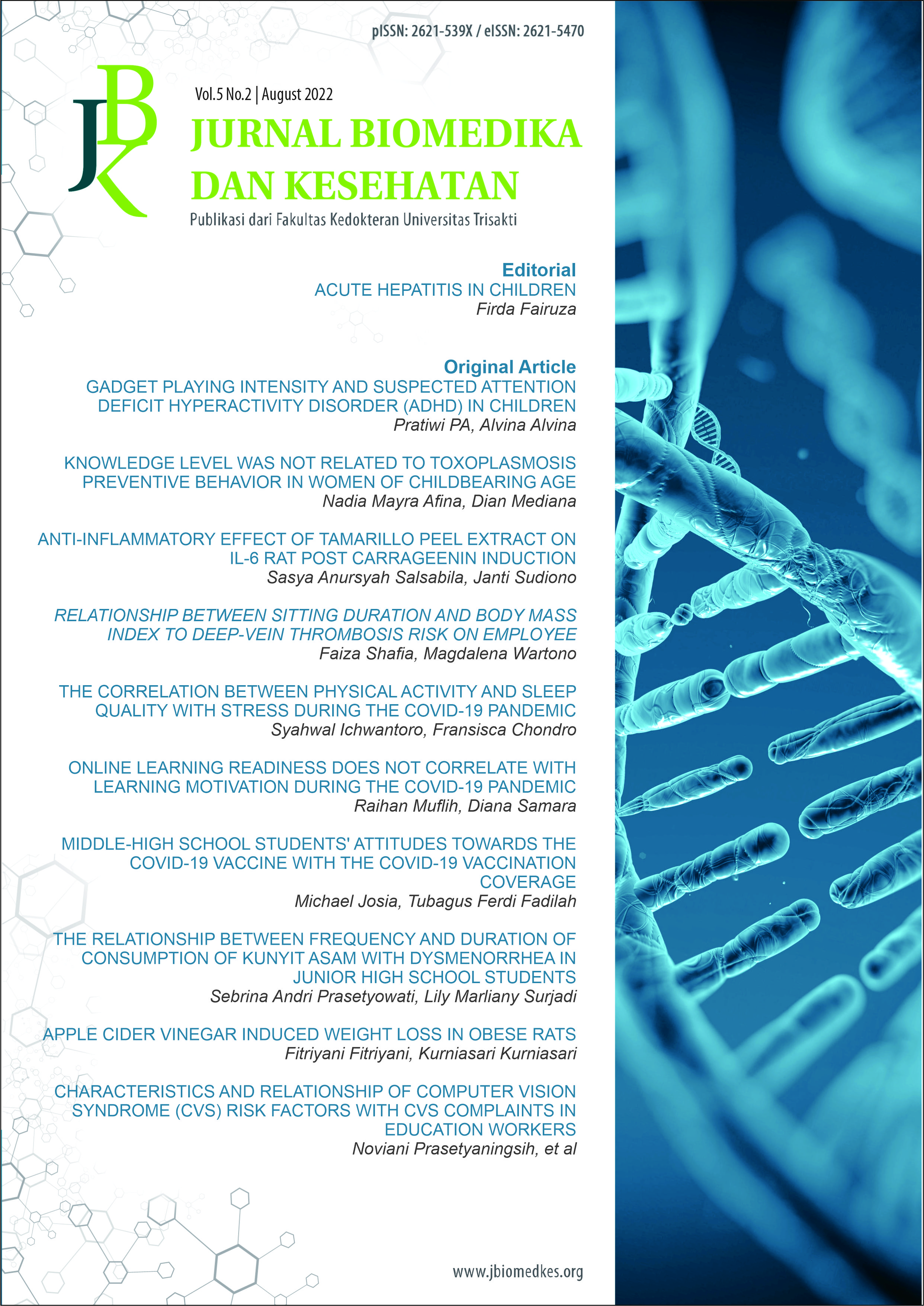THE RELATIONSHIP BETWEEN FREQUENCY AND DURATION OF CONSUMPTION OF KUNYIT ASAM WITH DYSMENORRHEA IN JUNIOR HIGH SCHOOL STUDENTS
DOI:
https://doi.org/10.18051/JBiomedKes.2022.v5.109-115Keywords:
Regularity, Length, Kunyit Asam Solution, Dysmenorrhea, Teenage GirlsAbstract
BACKGROUND
Puberty is intimately associated with adolescence, one of which is the
first menstrual period. Young women frequently have dysmenorrhea as
a result of menarche. Dysmenorrhea that isn't medicated appropriately
might make it difficult for young women to go about their daily
lives. Consuming kunyit asam is one solution to relieve the intensity
of dysmenorrhea pain. This study aims to determine whether the
consumption of kunyit asam and its regularity during menstruation can
lower abdominal pain in dysmenorrhea.
METHODS
In October 2021, a cross-sectional survey was conducted at the Yayasan
Indocement Middle School in Bogor, West Java. Cluster random
sampling was used to collect data from 108 junior high school students
who completed the Form Frequency Questionnaire (FFQ) questionnaire
to determine the frequency and duration of kunyit asam consumption and
the Numeric Rating Scale (NRS) questionnaire to reduce the severity of
dysmenorrhea pain. The Chi-Square test was used to examine the data,
with the level of <0.05 as the significance level.
RESULTS
Of 108 respondents, most of them experienced menarche at >11 years
old (90.74%), always take kunyit asam solution (57.41%) with duration
>3 months (74.07%) and did not have menstrual pain (88.89%). In
junior high school adolescents, a significant correlation was discovered
between the frequency and the duration of kunyit asam consumption and
dysmenorrhea (p=0.016, p=0.007).
CONCLUSION
In junior high school students, there is a correlation between the frequency
and duration of kunyit asam consumption and dysmenorrhea.
KEYWORDS: Regularity, Length, Kunyit Asam Solution, Dysmenorrhea, Teenage Girls
Downloads
Downloads
Published
How to Cite
Issue
Section
License
Copyright (c) 2022 Sebrina Andri Prasetyowati, Lily Marliany Surjadi

This work is licensed under a Creative Commons Attribution 4.0 International License.
The journal allow the authors to hold the copyright without restrictions and allow the authors to retain publishing rights without restrictions.

